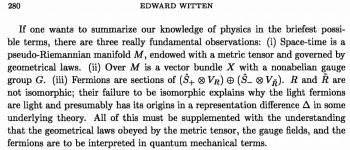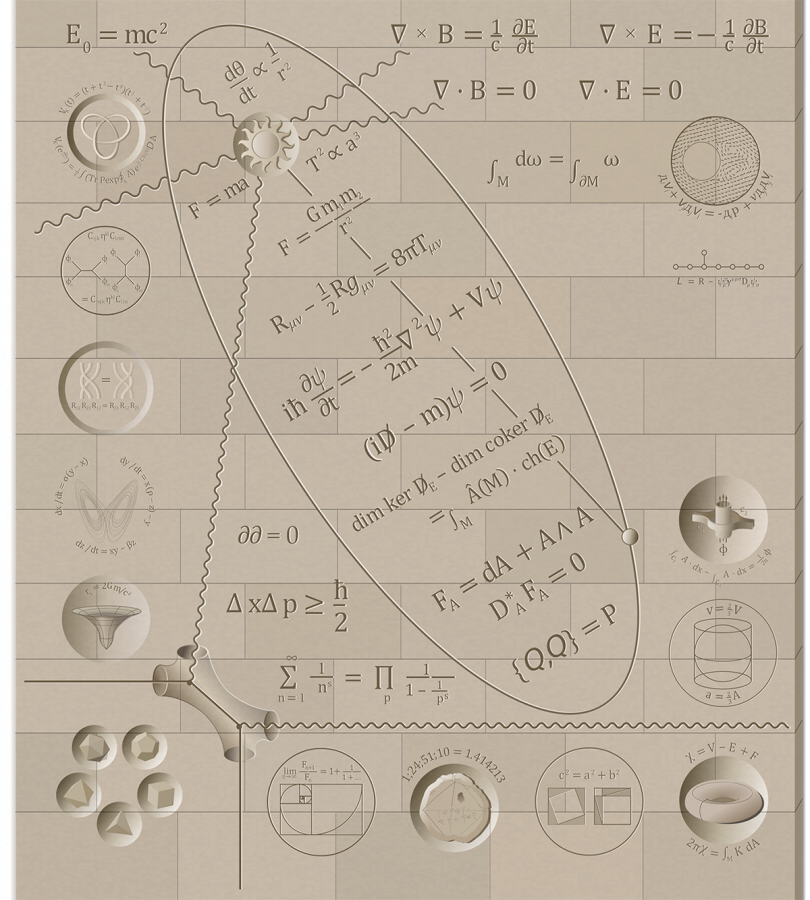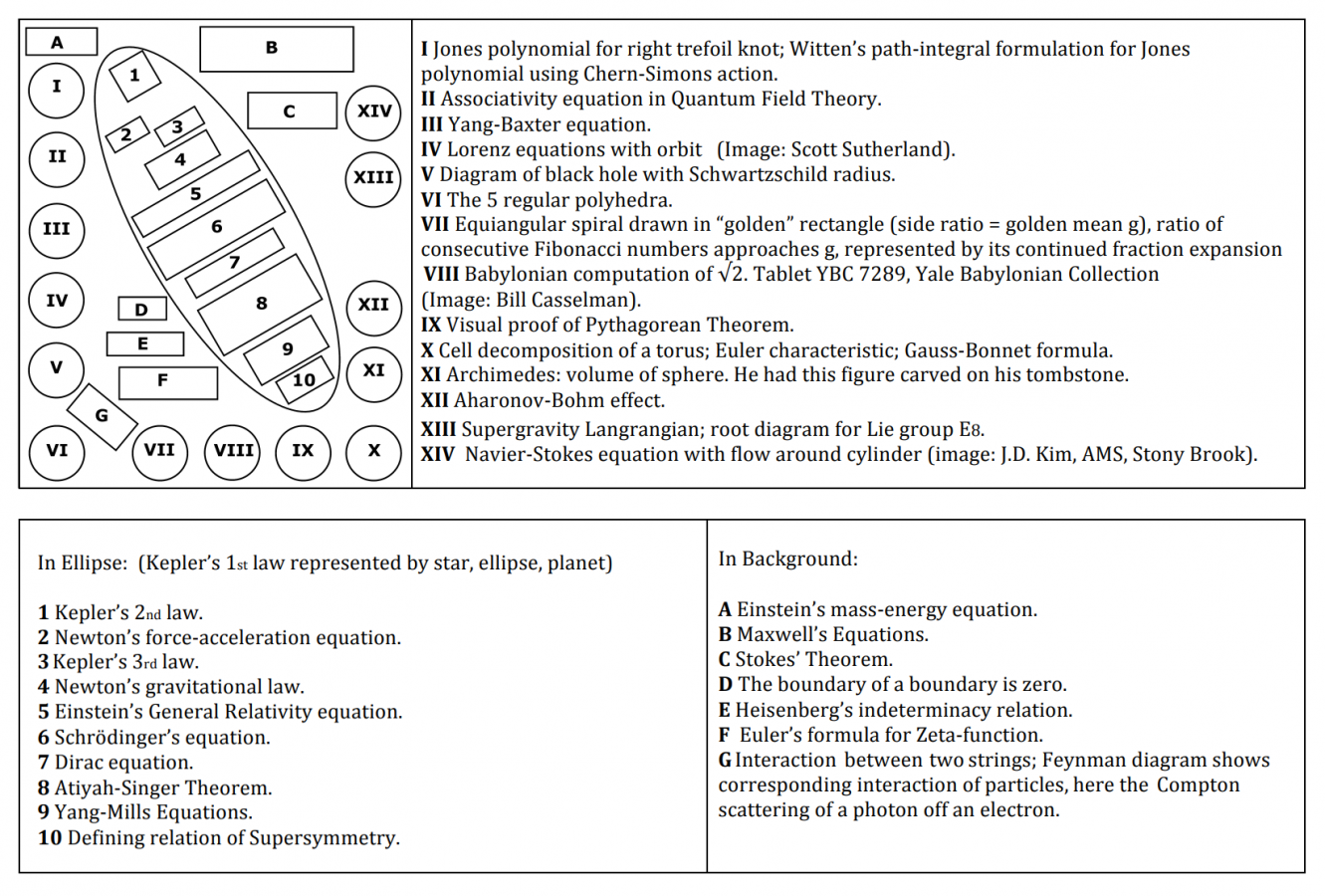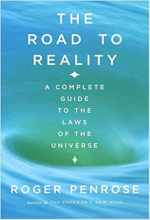User:Aardvark/GWT: Difference between revisions
No edit summary |
No edit summary |
||
| Line 64: | Line 64: | ||
|header= | |header= | ||
====Editing the Graph==== | ====Editing the Graph==== | ||
|content=}} | |content=[[Editing the Graph]] - The goal is to create an updated version of the Graph since there are several small aspects of it that can and should be improved. }} | ||
{{GenericBoxWithHeader | {{GenericBoxWithHeader | ||
|header= | |header= | ||
| Line 74: | Line 74: | ||
|content=}} | |content=}} | ||
</div> | </div> | ||
Revision as of 15:03, 24 October 2020
Overview
Prime Directive
A request:
Try to draw the lines through the three. View it as a unified idea:
The Paragraph gets edited,
The Wall gets defaced and graffitied,
The Sacred Tome gets rewritten.
But follow the skeins through each.
The Graph points to the Wall,
And the Wall to the Tome,
And the Tome leads to the Search.
Graph
The Graph is a paragraph from Edward Witten's paper Physics and Geometry, at the bottom of page 20:
If one wants to summarize our knowledge of physics in the briefest possible terms, there are three really fundamental observations: (i) Spacetime is a pseudo-Riemannian manifold $$M$$, endowed with a metric tensor and governed by geometrical laws. (ii) Over $$M$$ is a vector bundle $$X$$ with a non-abelian gauge group $$G$$. (iii) Fermions are sections of $$(\hat{S}_{+} \otimes V_{R}) \oplus (\hat{S}_{-} \otimes V_{\tilde{R}})$$. $$R$$ and $$\tilde{R}$$ are not isomorphic; their failure to be isomorphic explains why the light fermions are light and presumably has its origins in representation difference $$\Delta$$ in some underlying theory. All of this must be supplemented with the understanding that the geometrical laws obeyed by the metric tensor, the gauge fields, and the fermions are to be interpreted in quantum mechanical terms.
Wall
The following image is carved into a wall at Stony Brook University. It contains many equations and mathematical results that contributed to human understanding of reality.
Tome
The Tome is the book Road to Reality by Roger Penrose which contains a comprehensive account of the physical universe. To gain an understanding and intuition for the information contained in 'The Graph', and 'The Wall', reading this book will provide a great head-start. With 34 chapters spread over 1000 pages, including diagrams, equations, and descriptions, there are multiple avenues for understanding all concepts.
- ISBN: 978-0679776314
- Road to Reality by Roger Penrose on Amazon
- Purchase the book somehow, then get the PDF here
- There appears to be a Kindle Edition that isn't available in the US. If anyone in the community has a way to get a Kindle version of the book, please add it here.
- The Portal Book Club - We have a weekly group that meets to talk about this book. Come join us in Discord!
Study notes for the Tome can be found here.
Reference material by chapter can be found here.
Core Sub-projects
- Decoding the Graph-Wall-Tome Connection - What are the common themes that appear in the Graph, the Wall, and the Tome? What do they hint at?
Editing the Graph
Editing the Graph - The goal is to create an updated version of the Graph since there are several small aspects of it that can and should be improved.
Defacing the Wall
Rewriting the Tome
Resources
Reference
Other Sub-projects
- Studying the Tome - The Tome can be intimidating. This problem can be solved 1.) by creating resources that make it easier to digest its content and 2.) by going through the chapters together.
- Geometry Project - The aim is to create and collect resources related to Frederic P. Schuller's lecture series titled "Lectures on Geometrical Anatomy of Theoretical Physics" that provides a great introduction to geometrical concepts that are essential for the Graph, Wall, Tome project.
- Holonomy Project - The goal is to create visualizations for the effect known as "holonomy", whereby parallel transporting a vector around a loop in a curved space leads to the vector changing upon returning to the start of the loop. How the vector changes orientation/position in space is the holonomy of that loop in that space. This effect reveals deep information about the curvature of the space itself.
OLD Further Project Ideas
- Organize expeditions - (guided or unguided) tours through the portal and into the wonderful world we call physics. Intellectual tourism.
- Create/assemble resources that provide a geometric intuition for the equations and principles of fundamental physics - Geometric interpretations are most amenable to being visually represented. An example, is shown here.
- Create Accelerators: 2 minute guides to fundamental principles.
- Create/assemble resources that allow uninitiated to quickly and easily get up to speed with state of the project.
- Create/assemble resources that provide analogies for more complex principles - to demonstrate a key feature of the principle.
- Annotate/colorize the most important equations
- Publish discussions and comments on chapters of the Tome.
- Publish study guide for the Tome.
- Publish roadmaps for navigating through the Tome.
- Create dependency graphs for chapters of the Tome.
- Create expandable version of the Graph, i.e. multiple versions of the Graph that reveal more and more details.
- Create fully-fledged learning path like [1]
OLD Resources & References
- Recording of original call w/ Eric
- Eric’s Most Important Set of Books
- The Physics Travel Guide - a didactic Wiki that explains math and physics concepts in three levels of difficulty.
- Awesome Math - a curated list of useful math resources.
- Relevant conversations with Eric on The Portal Discord Server
- Misc recordings on The Portal Server for project and other notable conversations




